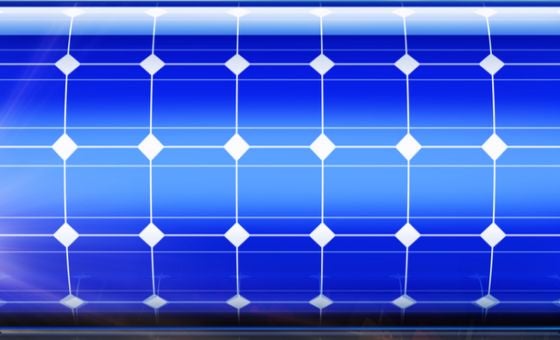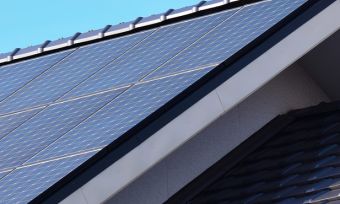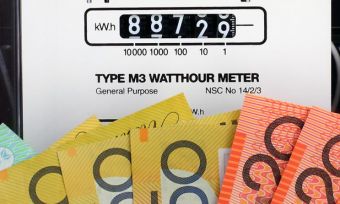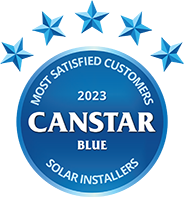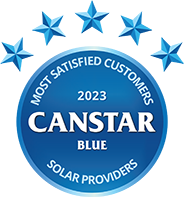Compare Solar Plans
Whether it’s to save money or become less reliant on the grid, we can help you find your way on your solar power journey. Find all the information you need about solar plans and compare your options with Canstar Blue.

Start with your postcode
to compare 1,500+ Canstar Blue expert rated plans
-
12 month plan with no exit fees Glossary
-
No lock-in contract with variable rates Glossary
-
12 month plan with no exit fees Glossary
-
No lock-in contract with variable rates Glossary
-
Ongoing plan with no renewal required Glossary
-
No lock-in contract with variable rates Glossary
-
12 month plan with no exit fees Glossary
-
No lock-in contract with variable rates Glossary
-
Ongoing plan with no renewal required Glossary
-
No lock-in contract with variable rates Glossary
-
12 month plan with no exit fees Glossary
-
No lock-in contract with variable rates Glossary
-
12 month plan with no exit fees Glossary
-
No lock-in contract with variable rates Glossary
-
Guaranteed fixed rates for 12 months Glossary
-
No lock-in contract with no exit fees Glossary
-
12 month plan with no exit fees Glossary
-
No lock-in contract with variable rates Glossary
-
Ongoing plan with no renewal required Glossary
-
No lock-in contract with variable rates Glossary
-
Ongoing plan with no renewal required Glossary
-
No lock-in contract with variable rates Glossary
-
Ongoing plan with no renewal required Glossary
-
No lock-in contract with variable rates Glossary
Showing 10 of 59 results
Unsure of a term in the above table? View glossary
The initial results in the table above are sorted by Solar feed-in tariff (High-Low) , then Price/year (estimated) including conditional discount (Low-High) , then Brand Satisfaction (High-Low) . Additional filters may have been applied, see top of table for details.
Latest in solar energy
How to choose the best solar plan
When choosing the right solar plan for your household there are three main factors you’ll need to consider; the feed-in tariff you are after, the size of your solar system and whether or not you’ll have battery storage.
To find out more on each of these points, click on the tiles below.
Find the best solar feed-in tariff
The bread and butter of any good solar plan is its solar feed-in tariff (FiT). This is a credit that can be earned on energy bills for exporting excess solar power back into the grid. FiTs are calculated in cents per kilowatt hour (kWh), with most rates falling between seven cents and 16 cents per kWh.
Most plans these days offer some kind of FiT for solar customers to cash in on, but these can vary drastically between energy providers and plans, so if you’re planning to export unused solar energy to the grid you’ll want to consider this feature when comparing deals.
Compare solar feed-in tariffs in each state:
Should I get a solar-specific electricity plan?
Some electricity providers offer specialty solar electricity plans for customers with solar panels. These plans generally offer higher-than-average FiTs, with some awarding additional credits or discounts to customers that also installed their solar system through the provider’s preferred installer.
It should be noted, though, that sometimes solar-specific plans can have with higher usage and supply rates, which could cancel out any savings made via credits earned through the FiT if your household’s energy usage is not monitored carefully.
Can you still get a good solar feed-in tariff?
While there are still decent solar FiTs available, customers should be aware that feed-in tariffs are declining overall, and a new two-way ‘sun tax’ is set to come into effect in 2025. This will involve not only offering customer rebates for sending electricity back into the grid when needed, but also charging customers for exporting energy during low demand/high supply periods.
Consider your system size
A plan with a high feed-in tariff isn’t the only way to get a return on your solar investment. This is especially the case if you have a larger system size installed – you may even find in some instances that you could be locked out of certain offers or plans. This is where considering your system size becomes vital when comparing solar plans.
Residential solar power system sizes in Australia generally range from 2 kilowatts (kW) up to 15kW, although most homes only need between 5kW and 7kW. Not all energy providers however, will accommodate their electricity or solar-specific plans to every size rooftop system.
It may be the case that some retailers cap their highest feed-in tariff to systems less than 10kW or 15kW, while others may only offer their best deals to those that installed solar through their preferred installer. This means that some households won’t be able to receive as large a credit on their bills for the solar energy they send back to the grid.
My system is too big for a premium feed-in tariff, what should I do?
If you find yourself locked out of high feed-in tariff plans due to the size of your system, then it may be better instead to focus on shifting your energy usage so that you are utilising more self-generated energy in the home, as opposed to sending it back to the grid for a credit. With this approach, households may benefit most from picking a plan with peak and off-peak times, such as a time of use tariff, or a single rate plan with a lower daily supply or usage charges, instead of one with the highest feed-in tariff. This way, the savings can be accumulated through a reduction in grid energy usage, not just from the credits for exporting solar energy.
What’s your solar battery storage situation?
The final element of picking the right solar plan for your home is considering your solar energy storage situation – as in, whether you have a solar battery or hope to install one in the future. Adding a solar battery to your system can help extend the usage and value of your solar panel system, as it will allow you to store excess solar power for use during the evening hours.
While solar batteries can still be used to export energy to the grid in exchange for a solar feed-in tariff, the primary reason to purchase storage should be to facilitate your own energy usage. Selling the excess can bring in extra revenue, but ideally a battery should be there to help you reduce reliance on grid energy, which in turn can help to lower your power bill.
If you are yet to install a battery, you’ll want to weigh up the way you use energy, how much you’re willing to spend upfront, and how it could impact your existing energy plan. This is important if you’re currently earning a higher government solar feed-in tariff, as modifying your system may make you ineligible for the bigger discount before your official cutoff date.
Cheap Solar Batteries
Keen to install a solar battery but put off by the high upfront costs? We’ve collated some of the best solar batteries available for under $6,000 below, to help you kick-start your solar journey without breaking the bank.
Best Solar Batteries
Our expert guide below highlights the best solar batteries currently available in the market across a range of criteria, from capacity, sizes, off-grid capabilities, hybrid features and the overall best.
Can a Virtual Power Plant (VPP) network help me earn more on my solar and battery?
If you have a solar battery, you may also want to consider joining a Virtual Power Plant (VPP) network, which can provide cheaper bills in exchange for allowing a provider to control your battery system. They can be a great way to earn credits on your power bills for sharing your solar energy with those in your local network, however, it should be cautioned that households may lose a certain level of control when it comes to where their solar energy goes.
The best solar installers in Australia
If you’re thinking about installing solar, our expert installer guides are a great place to start. Here we list some of the top solar installers available in each capital city, as well as a brief overview of their services and their primary contact details so you can jump straight into the quoting process.
See which installers are available in your local area below:
- Solar Installers in Sydney
- Solar Installers in Melbourne
- Solar Installers in Brisbane
- Solar Installers in Adelaide
- Solar Installers in Perth
Most Satisfied Customers – Solar Installers
Canstar Blue’s Most Satisfied Customers – Solar Installers award is based on the responses of more than 1,300 households with solar. In 2023, our best-rated solar panel installer was Solahart, which was awarded a full five stars for overall satisfaction, customer service and advice, installation process, performance of solar system, set-up cost and durability.
How do you install solar panels?
In Australia, you’ll need to contact an accredited solar company to install solar panels. Due to government legislation and industry standards, solar installation needs to be carried out by a licenced professional. There are thousands of accredited solar installers across the country where customers can request a quote specific to their circumstances.
How much does solar cost to install?
The overall cost of installing solar in Australia will vary greatly depending on factors such as household size, products used, type of roof and the installation companies’ costs. On average, however, these costs can range anywhere from $3,000 to $12,000.
Some states and territories may cop higher prices than others, due to the availability of installers and discounts from the Federal Government’s Small-scale Technology Certificate (STC) incentive as these are based on climate zones.
Typically Western Australians pay the least for their solar installations, whilst those in the Northern Territory tend to fork out the most.
Solar Providers in Australia
Some electricity providers are better known as players in the solar space than others. These kinds of retailers will typically offer additional services to solar customers, such as higher feed-in tariffs, speciality solar plans, VPP networks or even Buy Now Pay Later solar installations. These retailers may also offer speciality apps or monitoring services to help customers make the most out of their solar investment.
The big players in this space include the likes of:
- Origin Energy
- AGL
- EnergyAustralia
- Red Energy
- Lumo Energy
- Powershop
- Simply Energy
- GloBird Energy
- Nectr
- Energy Locals
- Amber Electric
Most Satisfied Customers – Solar Providers
Canstar Blue’s Most Satisfied Customers – Solar Providers award is based on the responses of more than 2,000 Australian solar customers. In 2023, our best-rated solar retailer was Red Energy, which was awarded a full five stars for overall satisfaction and customer service.
Outstanding Value Solar Electricity Plans
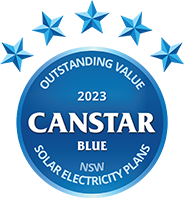
Canstar Blue’s Outstanding Value Awards are based on our unique value rank methodology and highlights the electricity providers that offer superior prices, value and features for consumers in each eligible state or territory.
Our 2023 winners for solar electricity plans included Red Energy (NSW), CovaU (VIC), EnergyAustralia (QLD), OVO Energy (SA) and Origin Energy (ACT).
Solar Energy State and Territory Guides
As previously mentioned, there is no one-size-fits-all solar energy solution for households and the same goes for each state and territory in Australia. Depending on the climate of the state or territory you live in, the installation costs, discounts, solar feed-in tariffs and availability of solar products, installers and providers may vary significantly. That’s why it is important to ensure you research information relevant to your area or chat to one of your local installers before making a purchase decision.
For a brief overview what you can expect in regards to household solar in each state or territory, check out our expert guides below:
Why compare electricity plans with Canstar Blue?
Easy to compare
Instantly compare solar plans from a wide range of Australian providers
100% free to use
Our solar comparison service is completely free, and we don’t ask for personal details
Switch with confidence
Compare across factors such as price, features, and overall value and switch in minutes
Meet our energy experts
Canstar Blue Editorial Team
Canstar Blue has a skilled team of experienced journalists, content writers and subject matter experts dedicated to producing factual, up-to-date and well-researched information.

Christine Seib
Editor-in-Chief

Tara Donnelly
Utilities Editor

Kelseigh Wrigley
Energy Specialist
Canstar Blue Data & Research Team
Canstar Blue’s Research Team provides the expertise that powers our Star Ratings and Awards, designed to help Australian consumers make more informed purchasing decisions.

Mitch Watson
Group Manager, Research & Insights

Joshua Sale
Ratings Manager

Breanna Gream
Data Insights Team Lead

Natalie Hudepohl
Energy Data Analyst

Amy Nghiem
Data Analyst
FAQs about Solar Plans
Important information
For those that love the detail
This advice is general and has not taken into account your objectives, financial situation or needs. Consider whether this advice is right for you.








